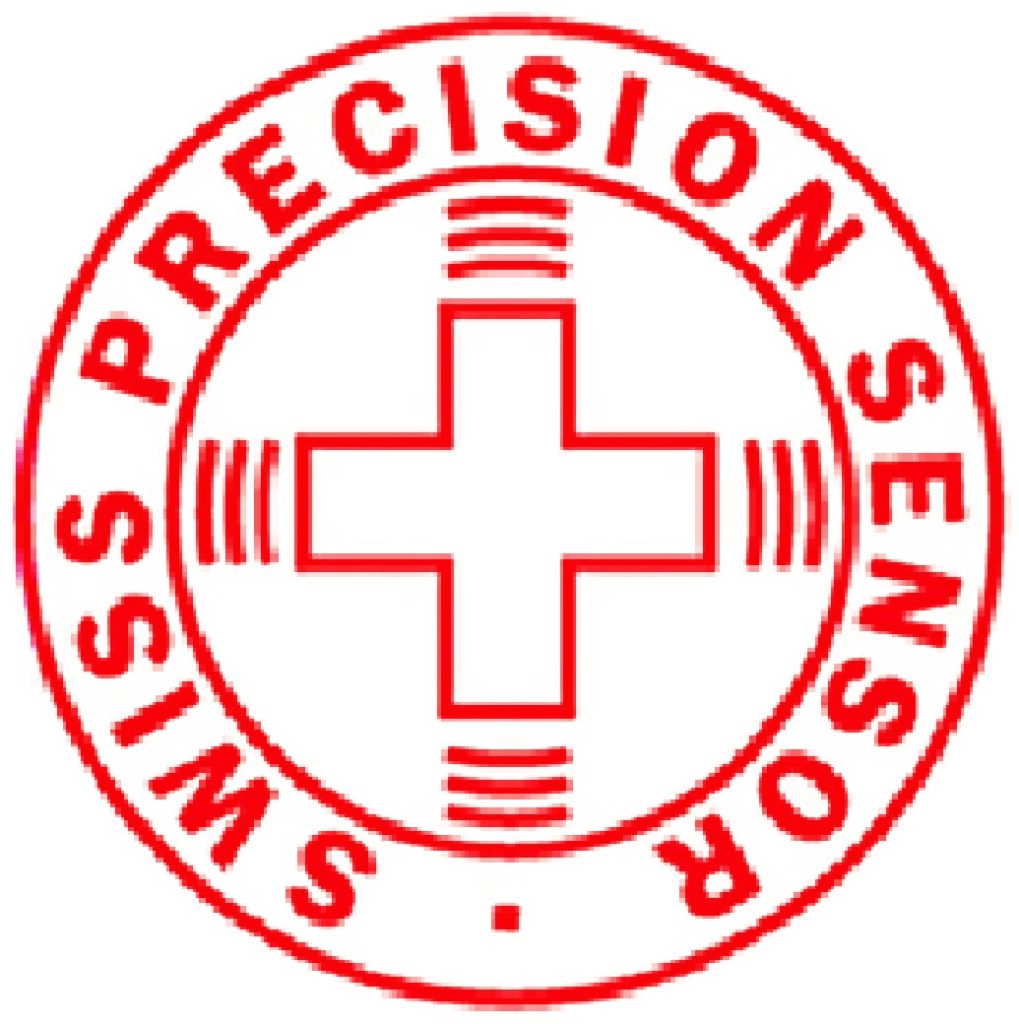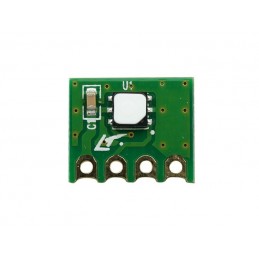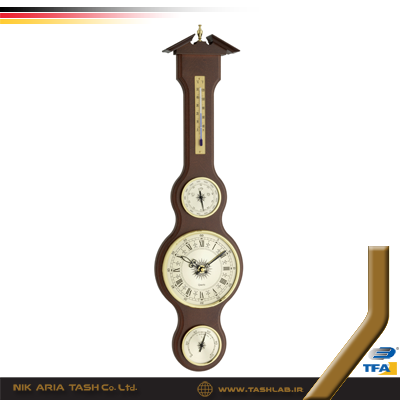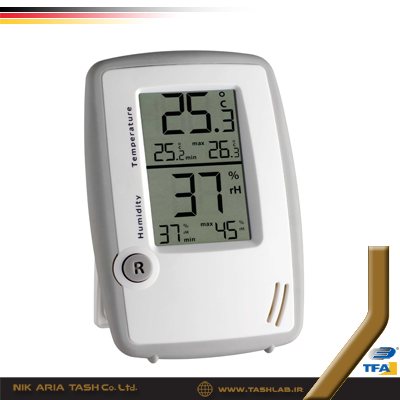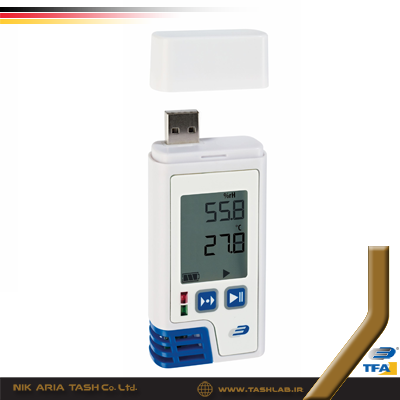 View Large
View Large
دماسنج لیزری چیست؟
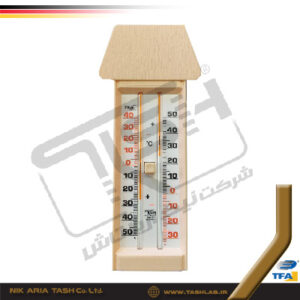
Invented the earliest scientific instrument for measuring temperature in 1592, Galileo, who chose a narrow neck glass bottle for this purpose. The bottle was filled with water, half-filled with water, and inverted in a container of colored water. By changing the temperature, the contents of the bottle expanded or shrunk, and the water column in the neck of the bottle went up or down. The Galilean instrument was not a true measure to measure temperature, so that its device was more of a temperature aspect. To the aspect of the thermometer, in 1631, he suggested some changes to Galileo. His suggestion was the bottle upside down to Galileo, where only cold and warming were recorded on the contraction and expansion of the water.
In 1635, the Duke of Freddylind Tuscany, who was interested in science, made a thermometer that used alcohol (which washed at temperatures much lower than the water temperature) and tightened the tube so that alcohol could not evaporate. Finally, in the year 1640 Scientists at the Lynch Academy in Italy created an example of new thermometers that used mercury and removed air at least partly from the upper part of the tube. It is interesting to note that it took about half a century until the thermometer completely Evolved. Following the discovery of the Gabriel thermometer Daniel Fahrenheit, a Dutch scientist in the seventeenth century built a gas and alcohol thermometer that can measure the air temperature with more accurate measurement. He designed a gyro thermometer in 1714 and rated it with a high precision coefficient in a special way. Fahrenheit published its research results in 1724. Swedish scientist Anders Silicius, in 1723, divided the gyro thermometer into a hundred equal parts. Measurement of air temperature by Celsius, Clydesus, in honor of its proud name. An English scientist Joule, who believed that heat was a kind of energy, carried out a lot of experiments in this regard, and carried out large measurements of the difference in water temperature at the top and bottom of a 100-foot waterfall on the conversion of energy potential of water to heat. After conducting these studies, he concludes that the amount of energy in the universe is constant, can only be transformed from one form to the next. So bodies can exist in thermal equilibrium. In 1843, Joule stated that if a certain amount of mechanical energy appears to disappear, a certain amount of heat appears, indicating the consistency of what we now call energy. Joule says that he is pleased that the great nature of nature is by the creator of the creator immortal, and that if a mechanical energy is consumed, a precise heat exchange is obtained from it. With his work in the lab. He was basically a man of action, and when he had little philosophical thinking about his findings. While others based on mental arguments had reached the same conclusion that the total amount of energy in the universe was constant. Now, after years of passing on the valuable ideas of human scientists, he has been able to better understand the laws and regulations of heat energy and to restrain and exploit power plants, steel factories, nuclear power plants, giant aircraft engines and thousands of thousands of phenomena.
Thermometer Definition
The thermometer is a measure that measures the temperature of different units. Temperature can be measured using thermometers. For example, you can measure your body temperature. Alcohol and gyro thermometers are the most common thermometers that work by expanding mercury or alcohol into their reservoirs. Temperature measurements by thermometers and alcoholic thermometers are possible at temperatures above the freezing point and below the boiling point of the liquid inside the thermometer, which can usually be indicated by alcohol thermometers at temperatures from 78° to 165 , Thermocoplastics thermometers should be used to measure temperatures. Streets are used.
Define an analog thermometer The amount of heat that shows heat and cold is the French word and it is used in Persian, but it has not yet been written (the culture of the system). The term “Thermos” means “heat” and “metron” means the size of the Greek and the means by which the amount of heat is measured, usually from a glass tube closed on either side and embedded in the bottom of the reservoir full of mercury or alcohol. To calibrate it, mercury thermometers are placed in the boiling water vapor (seawater), mercury rises in the tube based on the expansion of the body against heat, and at the point where it stops, that point with a value of 100. Then the mercury reservoir is poured into the ice crust. Mercury comes down from the tube and stops at a point that assumes it is a zero-point alert amount, and is in fact the point of freezing of water or the melting point of ice. Then, between these two digits are marked with numbers that call each part a degree. And such thermometers are divided into hundreds of degrees, called thermometer Celsius. Other than this, there are other types of ratings, including Rheumour Dermimetry and Fahrenheit Thermometer. Rheumour Thermometer – In this thermometer, the ice point is equal to zero degrees Celsius, but the boiling point of this thermometer is 80 degrees. What does the French scientist divide into 80-80 degrees in the thermometer between the freezing point of the water or the melting point of the ice and the boiling point? The Rheumour thermometer is equal to 100 degrees Celsius thermometer.
Analog Temperature Thermostat Range It should be noted that mercury thermometers can not measure temperatures below 35 degrees below zero, because mercury is frozen at -39°C. They use alcohol thermometers to measure extreme temperatures because alcohol is 120 °C fluid and vice versa at about 78 ° C. This involves the use of a combination of maxim and manymium thermometers that form alcohol and mercury It finds that this type of heat can determine the maximum temperature and at least it for a certain period of time, such as one night, and is made up of a lengthy alcoholic beverage, and in order not to get large enough, the stem bends it twice and in the curved part The one that is in the form of “yo” in France is mercury and thus alcohol is divided into two parts On top of two sides of the mercury is a steel plate called the sign.
Procedure When the air is warmed, the alcohol of the middle tank expands and mercury drops in the lower left branch, and as a result, mercury rises in the second branch and marks the way. When the air cools down, the alcohol shrinks and returns. But the sign is on the right side of the tube and it does not come down. If the mercury on the left side raises the mark and if it is heated twice, this sign sticking to the tube and this can be repeated several times over several times. When you visit the thermometer, the right side shows the maximum temperature and the left side mark at least, if the level of mercury in that time in each branch determines the temperature of the same time. For example, at a temperature minus 21.5 °C and at least 10.5 °C, and the temperature is 12 ° during the visit, and a non-magnetic magnifier is used to restore the markings to the surface of the mercury. Types of temperature gauges
1. Medical Thermometer Medical thermometer, this thermometer is used to measure body heat, and because the human body temperature is 37 degrees Celsius (98.5 degrees Fahrenheit), it is in medical thermometers between 33 and 42 degrees Celsius. And, in order to be detached The thermometer of the human body (under the tongue – the armpit in the anus …) and dealing with the heat or the coolness of the environment, the mercury does not change inside the thermometer, a special curvature at the end of the tube placed the thermometer near the mercury reservoir and each time they want to use it. The brand repeatedly throws the thermometer toward the reservoir so that the mercury passes through the curvature into the tube and fully enters the tank.
2. Pyrometer or thermoelectric Another thermometer in the industry is called Pyrometer or Thermoelectric – The basis of this thermometer is the fact that if the interface between two different metal coils is heated, then the current flows through them and by a precise “milliampermat” it can be proved that the degree The higher the heat, the more intense the flow will be, and by measuring the intensity of the flow temperature it will be known. It should be known that the invention of the thermometer is attributed to many scientists, but the truth is that Galileo was an Italian scientist before 1597. Invented this tool and then evolved. (From the twentieth century larousse and the book of physics compilation of the book). And refer to the thermometer and the amount of warmth.
3. Gas thermometer Gender, building, and dimensions of the thermometer in offices and institutions around the world that use this device. It is different and depends on the nature of the gas and the temperature range for which the thermometer is intended. This thermometer consists of bubbles of glass, china, quartz, platinum or platinum iridium (depending on the temperature range in which the thermometer is used), which is connected to a jumper barometer by a capillary tube. This thermometer works in accordance with the two laws listed for full gas.
4. The rules of gases When Isaac Newton was thinking about light and gravity in Cambridge, another Englishman, Robert Boyle, at Oxford, was studying mechanical properties and compressibility of air and other gases. Boyle, who had heard the invention of the lead of Ottofon Garyk, completed his project, and experiments were carried out to measure the volume of air at low and high pressures. The result of his work is what is now known as Boyle-Mario’s Law, and states that the volume of a given amount of gas at a given temperature, with the pressure on which the gas enters, is inversely proportional to the pressure on which the gas enters. About a century later, the Frenchman Joseph Gillesack, while studying the expansion of gases, found another important law, which states that the pressure of each gas contained in a given volume per 1 °C increased the temperature by as much as 273/1 its initial volume Finds. The same law was discovered by another Frenchman, Jacques Charles, two years earlier. And so often it’s called Charles Gillesack’s law. These two laws were the basis for the construction of gas thermometers.
5. Liquid thermometer This type of thermometer is one of the most common types of thermometers used in the industry, and so on. We mainly know this type of thermometer as mercury or alcohol thermometers. The building of this kind of thermometers consists of a liquid reservoir and a capillary tube, in which the liquid inside the reservoir is elevated through the tube and shows the temperature proportional. The mercury thermometer can be used to measure temperatures from 37.8 ° to 315 ° C. However, if the filling above the mercury level is filled with nitrogen gas, it can be used up to 538°C.
6. Fluid expansion thermometer This kind of thermometer is one of the most expensive, most commonly used, and most adaptable, instruments for measuring temperature in the industry. The thermometer is shown in the opposite form. As it is seen, with increasing temperature, the pressure inside the bubble, which can contain liquid content, Gas or steam, is raised and measured by the pressure gauge. The length of the capillary tube can be up to 60 meters; however, this value will affect the accuracy of the temperature measurement. The best way is to use a short hair pipe attached to a transducer with an electric pressure transducer.
7. Electric Thermometer These kind of thermometers are primarily used in industry and can measure temperatures down to very high temperatures. They are mainly resistive and thermocouple.
8. Thermometer with electrical resistance A resistive thermometer is a long, elegant wire, usually tucking it around a thin frame to prevent the pressure from changing the length of the wire that comes from its contraction when it cools down. In special circumstances, the wire can be wrapped around or placed around the body to measure its temperature. In the very low temperature range (resistive thermometers usually consist of small radioactive resistances of carbon or germanium crystals, the impurity of which is arsenic, and the object is contained within a blocked capsule filled with helium. This thermometer can be applied on the physical surface Which is designed to measure its temperature, or put into a hole created for this purpose. The platinum resistance thermometer can be used for very precise work in the range of -253 to 1200 degrees Celsius.
9. Thermistor The thermistor is a semiconductor device that, unlike metals, has a negative resistance coefficient. In addition, its resistance changes exponentially with temperature. The thermistor is a very solid base and is expected to have a steady-state performance of up to 0.01 centigrade with proper grading. One of the interesting features is that it can be used as a temperature compensator for electrical circuits.
10. Quartz crystal thermometer A new and very accurate method of temperature measurement is based on the sensitivity of the quartz crystal resonant frequency to the temperature change. When a suitable cutting angle is used for the crystal, a linear linear fit between the frequency and the temperature is established. The commercial models of this device use electronic counters and frequency readers to measure the frequency. The operating temperature of the device is claimed to be negative from 40 to 230 degrees Celsius.
11.Liquid Crystalline Dementia The pulp liquid crystals, made of cholesterol esters, show an interesting response to temperature. In a repeatable temperature range, the liquid crystal reveals all color spectra of color. This phenomenon is reversible and repeatable. By changing the formula, liquid crystals can be used from less than zero degrees to several hundred degrees Celsius.
12. Thermocouple The thermocouple is another device used to measure temperature. In this type of thermometer, the property of expansion and contraction of solid objects is used. The scope of a thermocouple depends on the material that the thermocouple has. It is made of a range of 10-25% platinum thermocouple platinum irudium from zero to 1,600 degrees. The advantage of the thermocouple is that it is thermally balanced due to its small mass, very quickly with the temperature system it is intended to measure. Temperature variations, therefore, affect it easily, but it does not have the accuracy of a platinum resistance thermometer.
13. Variety of thermometers used in meteorology
-13.1. Standard Thermometer (Thermometer) This thermometer is a very narrow glass tube blocked at the bottom of which is a chamber and embedded in mercury or alcohol. There is a complete vacuum inside the thermometer tube. The heating and cooling of the reservoir causes the liquid to warm up and cool inside the reservoir and consequently causes the fluid to rise and fall inside the glass tank, by observing the fluid level inside the tube and the numerical readings written on the glass body. Air temperature At that moment it will be clear. Variety
-13.2. Maximum Thermometer It is often necessary to measure and stabilize the maximum temperature of the air during a given period, such as one night, in addition to the normal temperature. For this purpose, they use maximum thermometers. This kind of thermometer with a slight difference is almost the same as the ordinary thermometers, in which the capillary tube is very narrow at the point where it leads to the reservoir. When the temperature rises, the mercury is expanded into the reservoir, and the resulting force can move the mercury out of the narrow duct above the reservoir to the top of the tube, so that the mercury heights rise up inside the reservoir and, by decreasing the temperature of the fluid into the reservoir, shrinks. But the thinness of the tube prevents fluid retention into the reservoir, and the fluid level remains in the tube at the place where the highest previous temperature has occurred, so the upper mercury surface shows the maximum temperature.
13.3. Minimum Thermometer The minimum thermometers used to stabilize the lowest temperature occurred over a given period. The thermometers are at least as common as conventional thermometers, except that the liquid inside the tank uses this kind of thermometer instead of mercury from dilute liquids such as alcohol. In addition, inside a capillary tube, a glass needle that is rounded round is abandoned as an indicator, when the air temperature is reduced, by constricting the high-liquid liquid inside the capillary tube by applying the surface tensile force The needle index moves to the bottom of the reservoir. As the temperature rises, the alcohol again passes around the needle inside the capillary tube and climbs upward, but the needle stays in the lowest area previously leveled by surface tension . Thus, the upper part of the glass index shows the lowest temperature that occurred, while the end of the alcohol surface at the top of the tube shows the instantaneous air temperature.
13.4. Minimum Thermometer (Max. Thermometer) This thermometer is a combination of two minimum and maximum thermometers, the thermometer is made of a U-shaped glass tube, the two ends of which are blocked. The bottom of the U tube is filled with mercury. In addition to mercury, the upper part of the tube in the left part is completely filled with alcohol, but half the volume of the right tube, the end of which is expanded as a tank, is filled with alcohol and half of it is filled with a gas type. At the highest level of mercury and inside the alcohol, in both columns, the glass indicators with a needle in the middle are embedded in the hot and cooled state, followed by the expansion and contraction of the mercury level up and down. The highest level of mercury in the upper left branch is the minimum and maximum temperature of mercury in the upper right branch showing the maximum temperature.
13.5. Thermograph Dampening is a completely mechanical device and is made using a metallic element whose curvature changes with temperature. On the one side of the metal element sensitive to temperature changes, which is curved, it is closed to the arm of the long and movable lever, which is possible arm It can directly display the temperature from a calibrated simple scale, or that the end of the arm is connected to a stable pen. With the change in the air temperature, the curvature of the metal changes, and this, due to the temperature changes, causes the pen in the end of the mechanical arm to move up and down on the graph paper and the temperatures are recorded
13.6. Optical Pyrometer This type of thermometer, also referred to as a non-contact thermometer, is based on the color of the light emitted from the object, which ultimately measures the temperature of the object on the basis of the fact that all black bodies will exhibit a certain light temperature, We conclude that the application range of this type of thermometer is high at high temperatures and is about 500 degrees Celsius for iron.
Process: The light created by the object is passed through an optical system (with a certain magnification), in which a small molten lamp has escaped. (So, if someone looks at the system in the eye, he will see a very narrow light.) In the collision of this light with a lamp lamp, it will pass through a stream that determines the temperature of the object. This flow is controlled by a potentiometer positioned between the power supply (a battery) and the lamp. An ammeter is used to display the temperature. The range of 900 ft for temperatures ranging from 500 °C to 3000 F varies from 1600 °C.
13.7. Regulator and controller In most industrial facilities, only showing the temperature by the machine is not enough and it is necessary to record the temperature by inserting a moving pen instead of the potentiometer handwriter. This device is known as an annoying registrar. Also, by using electrical circuits in the device, the gas flow to the burners or the current to the thermal elements can be controlled and the furnace temperature is recorded in the desired value. This device has Grenam control overflow. It is also possible to design a device for recording and controlling the temperature of one or more thermocouples.
13.8. Radiation Exposure The operating principles of the radiation flare are based on a standard radiant source called the black body or full glow. A complete irradiation is a supposed physique that absorbs all its transmitted beams. At the same temperature, such a body shines more energy than any other object. Radiation exposures are generally calibrated to indicate full or actual temperature. The Stefan-Boltzmann’s law, which is based on the scale of the radiation of the flare, shows that the energy radiation is from a full glow, proportional to the fourth power of absolute temperature, which is here: Energy Radiation Track = W Fixed proportion = k Absolute Absolute Absolute Absolute Total Tensile Temperature – T
13.9. Azar Gostar Light The instrument described in the previous section, which responds to all wavelengths of the radiation, is called a radiant nebulizer. Although the principles of the operation of an atomic cavity are identical with the radiation detector, a singlewavelength single-wavelength or narrow-band light detector operates from the visible wavelength. The Nuclear Meter measures the temperature by comparing the light emitted by the source with the light emitted from a standard source. For ease of comparison of colors, a red filter that only passes through the wavelength of the red light. The most common type of optical flood in the industry is the type of hidden field. It consists of two parts, a telescope and a control box. The telescope contains a red glass filter, mounted in front of the eye, and a graduated light bulb focusing on the image object of the object being tested on it. This device has a key for closing the electric circuit of the lamp and an absorbent curtain to change the range of temperature measurements by flash. The operating range of the optocoupler is from 760 to 1315 C. The upper limit of the temperature is to some extent dependent on the risk of the film being degraded and the amount of glare from the high temperatures. The temperature range may be increased by applying the absorbent curve between the object lens and the grid to a higher level, and this allows for shine compatibility at lower temperatures of the strand. Alternatively, using lower temperatures of the strand, it can be used for high temperature temperatures The By using different absorbent curtains, the upper margin of the optometrist can be increased to 5500° (Co10000) or more.
Some of the benefits of optical and radiant exposure include Measure high temperatures Measure the temperature of the objects away Measuring the temperature of small or moving objects No part of the device is exposed to heat damaging effects
Some limitations of optical and radiation exposure include Because the metrology compatibility depends on individual judgment, there are errors Mistakes occur due to the presence of smoke or gas between the supervisor and source Depending on the amount of deviation from the full exposure, a fault occurs.
فروشگاه نیک آریا تاش
تاش لب، فروشگاه محصولات نیک آریا تاش
شما مشتری گرامی می توانید با مراجعه به فروشگاه آنلاین ما، تاش لب tashlab.ir ،کلیه محصولات نیک آریا تاش را مشاهده و در صورت تمایل خریداری نمایید.



